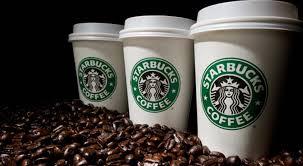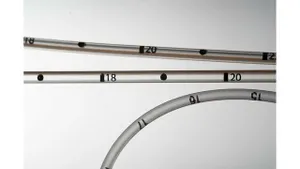New technology for coffee cups separates the plastic from the paper
Most people's morning routine involves coffee. After all, an estimated 58% of American adults consume coffee daily, according to the National Coffee Association. And as a result, both foam and paper disposable cups are everywhere.
July 22, 2013
Most people's morning routine involves coffee. After all, an estimated 58% of American adults consume coffee daily, according to the National Coffee Association. And as a result, both foam and paper disposable cups are everywhere.
Many coffee companies both large and small turn to paper cups. Starbucks uses about 4 billion disposable cups annually, but unless you're in cities with robust recycling programs such as Seattle or San Francisco, the cup probably ends up in the landfill. This is because most paper recyclers don't take those cups due to the thin coating of plastic resin inside the cup. The coating serves its purpose to prevent seeping and to enhance insulation, but it doesn't help increase recycling rates.
 Well, a UK specialty paper company believes it found the solution to that dilemma. James Cropper has opened a new facility that separates out the plastic incorporated in the cups and reuses the pulp to make paper.
Well, a UK specialty paper company believes it found the solution to that dilemma. James Cropper has opened a new facility that separates out the plastic incorporated in the cups and reuses the pulp to make paper.
Until now, the plastic content of cups has made them unsuitable for use in papermaking, the company said in a news release. In the UK alone, an estimated 2.5 billion paper cups go to landfill.
Disposable cups are made up of between 90 - 95% paper with a 5% thin coating of polyethylene. After four years of development, James Cropper can now not only recycle the fiber content in cup waste but also recycle the plastic coating, which the company says, "gives a sustainable solution to the global problem of disposable cup waste."
James Cropper's process involves softening the cup waste in a warmed solution, separating the plastic coating from the fiber. The plastic is skimmed off, pulverized and recycled, leaving water and pulp. Impurities are filtered out leaving high-grade pulp suitable for use in luxury papers and packaging materials.
The new facility received plenty of attention and was even inaugurated by the Queen of England who visited JamesCropper's headquarters in the English Lake District alongside The Princess Royal.
"Cup waste is a rich source of high grade pulp fiber, but until now the plastic content made this product a contaminant in paper recycling," said Mark Cropper, chairman of James Cropper. "Our technology changes that and also addresses a major environmental waste problem and accompanying legislation. We are greatly honored that Her Majesty The Queen and The Princess Royal are joining us on the occasion of our new plant opening. There is no more fitting way to celebrate this pioneering development."
That's all the details for now on the technology, but I wonder if this could be used in the U.S. as well.
Impact on reusables?
Back in January, I spoke with Jim Hanna, director of environmental impact for Starbucks, about the company's reusable cups made out of PP. Talking with him, it seems the company is on board for reusable packaging, although paper cups are still the company's primary form of packaging as of now.
Hanna was fully aware that customer acceptance might be a slow process. He said the look, feel and price all contribute to these barriers. Starbucks said by offering the cups at the low price point of $1 and a dime discount off for every usage in store, the cup pays for itself after 10 drinks.
"The world has struggled to reduce single-serve packaging for decades, this is not a new issue," he said. "What Starbucks has the ability to do is test new concepts and we have the ability to do direct research with customers. The reusable cups are one piece of a broad strategy."
In fact, he hopes one day for the company to use recycled PP in its packaging.
So I'm curious if the James Cropper technology becomes more widespread, will that have an impact on the reusable coffee cups design? Or is there room in the market for both?
About the Author(s)
You May Also Like


